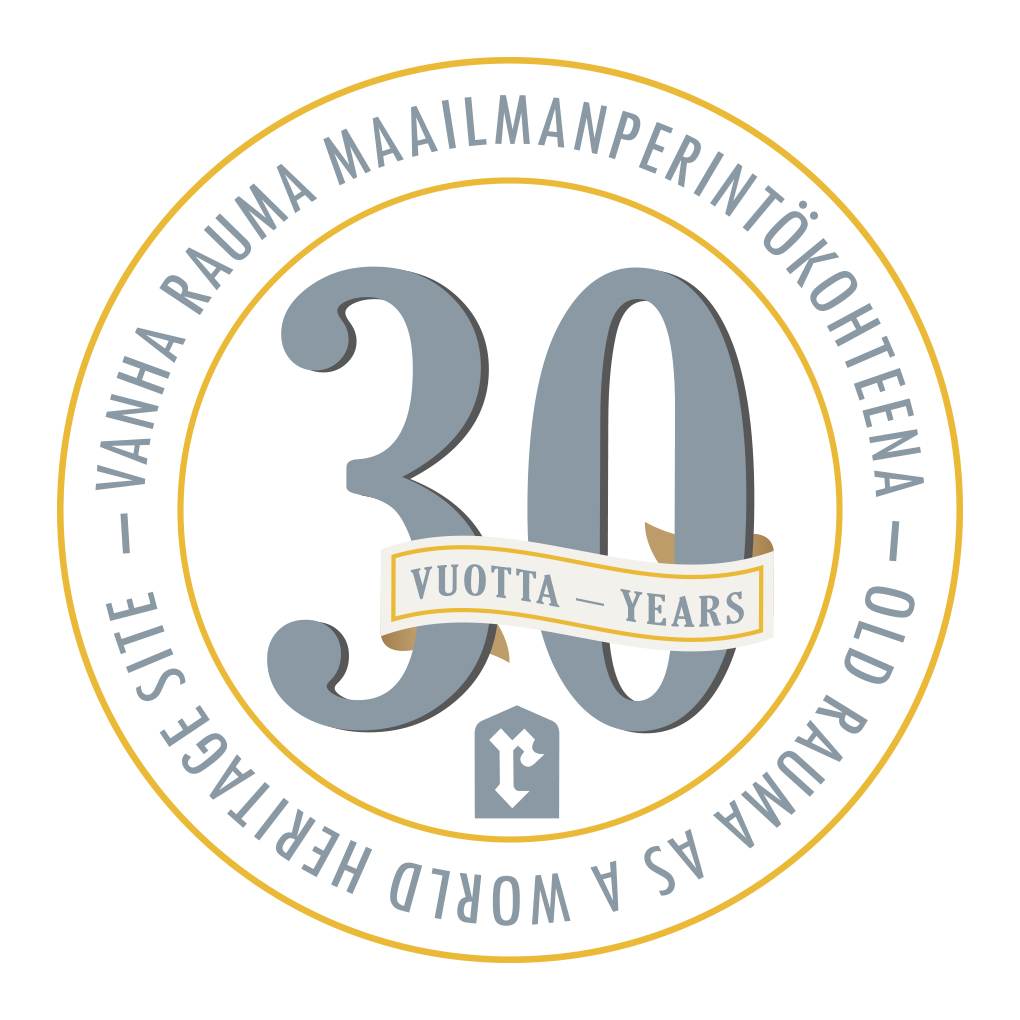MP30 – The craft tradition of Old Rauma
29.7.2021


Old Rauma, a UNESCO World Heritage Site, will celebrate its 30th anniversary in 2021. Old Rauma was inscribed on the World Heritage List in 1991 as a unique example of a living and well-preserved old Nordic tree city.
The ninth part of the 30th anniversary of Old Rauma as a World Heritage Site series tells the story of Rauma’s handicraft tradition.
The craft tradition of Old Rauma
For centuries, the old medieval town has needed craftsmen and craftswomen. In the old days, craftsmanship was governed by a system of guilds, which existed in many European countries from the Middle Ages until the 19th century. It was a system whereby only members of a particular official association of craftsmen, the guild, were allowed to practise, particularly in the craft trades.
Each town usually had its own guild for each craft that was practised there. Only master craftsmen who had been awarded the title of master craftsman after passing an approved master craftsman’s examination were allowed to work as self-employed craftsmen. Under the supervision of the masters were the journeymen and apprentices who aspired to become masters. Before a craftsman could become a master, he first had to apprentice himself to a master and practise his craft.
In the 1760s, the Finnish economist Antti Chydenius (b. 1729 Sotkamo, d. 1803 Kokkola) published a paper in which he highlighted the negative aspects of the trade union system and called for its abolition. The problem was that access to the craft was perceived as unfair and difficult. If you were the son of a shoemaker or tailor, you could become a shoemaker or tailor, but for others, the path was rocky.
It was not until 1868 that the Emperor abolished the trade union system, which was replaced by craftsmen’s and factory associations. The Rauma members of the Reichstag, Johan S. Wesander, a merchant-porter, and Adolf Wilhelm Granström, a merchant and vice-consul, had been informed in advance of the imminent imperial decree, and so the Rauma Craftsmen’s and Artisans’ Association was founded even before the law came into force in 1867. In 1879, a further law on freedom of trade was passed, making it easier to become a craftsman.
The number of craftsmen in Rauma has varied over the decades and centuries. In 1600, it is known that there were possibly only four craftsmen in the town.
According to a list of craftsmen compiled in 1649, Rauma already had:
- 3 tailors
- 3 blacksmiths
- 2 shipbuilders
- 4 mates
- 4 innkeepers
- 8 innkeepers
- 4 shoemakers
- 4 fishermen
- 1 potter
- 1 tanner
- 2 carpenters
- 7 sage-men
- 3 bakers
- 10 brewers
- 3 distillers
- 2 butchers
- 1 mason
- 1 butcher
- 1 wine maker
- 1 tobacconist
For centuries, people often sought to learn a craft in Turku or Stockholm. By the 19th century, the list of craftsmen was much longer. The list of trades had grown to include glassmakers, dyers, hatters, watchmakers, tanners and shoemakers.
The Old Rauma Market is still a lively trading place in the 21st century. In the early 1900s, the market was used by Rikhard Maikola and his wife to sell meat. Maikola’s daughter recalls the market trading of that time:
“My mother and father woke up at four or five in the morning. The father and mother used to get up at 5:30 in the morning and then they had to take the meat that had been slaughtered behind Harmaalinnanmäki, in the mouth of Laiho. They were wheeled in by hand, called the “guilt room”, that is, the meat inspection room. And only after they had been inspected were they brought to the market and cut up for sale. And they were sold that day, the next day was slaughter day again and the next day was meat sale day, so that every other day there was slaughter.”
There are still craftsmen in the Old Rauma area today. The skills of Rauma lace-makers are known all over Finland. Many other craftspeople, especially those working with textiles, are still best found in Old Rauma.
Risto Kupari, Museum and Culture Director of the City of Rauma
Text sources:
Rauma Museum archive
Hella, Tenho, 1998. Rauma’s craft and industrial heritage. Oy West Point Oy, Rauma.
